How-to: Ride Sand with Matt Phillips
![]()
This content was originally published in issue #55 of Transmoto Dirt Bike Magazine in April, 2016.
![]()
From the outside, riding sand appears graceful and effortless; like floating on a fluffy white cloud of super-forgiving blond dirt, right? Wrong! Bear witness to any first-time rider on sand, and you’ll soon realise that making a dirt bike go where you want it to go on sandy terrain requires not only a specific repertoire of skills but also a completely different approach to line selection, body weight and the use of your throttle and brakes. So, how do you learn to adapt to your bike squirming around underneath you? What changes do you need to make to your riding technique and forward vision to build your confidence in sandy conditions? And how insanely good does it feel once you learn to tear the bag out of a sandy track? To answer these questions, we enlisted Tasmanian tearaway Matt Phillips, who at just 24 years of age has already firmly established himself as one of the best sand riders in the world. When Matty returned to Oz for Christmas, we hooked up with him on some of his favourite stretches of Tasmanian sand and asked the two-time world enduro champ to cough up everything he knows about the enviable art of riding silica.
Take it away, Matthew…
Entry & Set-up

Mental Approach
In sand, your bike feels very different than it does on hardpack. The most obvious difference is that it’ll squirm around underneath you, and that does take some time to get accustomed to. You need to be mindful that the way you brake and weight your footpegs in sand is also a lot different. The most important thing to get your head around when riding sand, though, is that it’s all about preparation and changing your mindset. Whether you’re confronted with a corner, straight or set of sandy whoops, you need to look even further ahead than normal and get yourself set up another one or two steps in advance. To get sand right, it requires a somewhat premeditated approach. It’s all about remaining fluid and retaining your momentum.
Braking & Set-Up
Allowing for the fact that the sand itself acts as a brake, it’s important to get your braking done a little earlier so you don’t have to adjust anything once you’re into the corner. Ideally, you only want to brake once and turn once for a sandy corner. I’ll be standing up with my weight a little further back on the bike than it would be for harder terrain, too. If you don’t brake early enough and come into a sandy corner too fast, all the weight will push forward and it’ll want to stand the bike up. You’ll end up taking a series of bites to get around the corner, which means you run the risk of dropping or dragging your inside leg. And that’ll affect your flow and momentum through the rest of the turn, or lead to a crash.
Contrary to what a lot of people think, you can still use plenty of both front and rear brake in sand, but any hard front brake application needs to be made with the bike upright. As you start to tip the bike in, however, you use a fair bit less front brake. And rather than aggressively chopping the throttle in preparation for braking, I like to roll off the gas more progressively in sand. Otherwise, all the weight will rapidly transfer to the front wheel, and that’s when most guys get themselves into trouble.
You want to be slow enough coming into the turn that you can sit reasonably early, get on the gas early, and power your way right through the corner. The first part of the corner may feel a little slow, but if you’ve got the bike’s weight low and settled and balanced, you can then use the throttle to power progressively through the entire turn. Plus when you’re on the gas, it’s easier to control your line and the lean angle of the bike.
Sitting vs Standing
If there are big braking bumps coming into a turn, you’ll obviously need to stand while braking and use your limbs as extra suspension. But I see a lot of guys standing too much in sand when they’d be better off sitting. It’s often because they come into a sandy turn too hot and end up standing far too long as a defense against the bike getting out of control. That in itself tells me that they needed to come in slower to set up better for the turn. And once they do move to the seated position, I also see a lot of guys sit too far back on the seat. If you’ve set up properly for the turn, you can sit up forward in the pocket of the seat, just as you would in hardpack terrain.
Body Position
In sand, you always want to be in a strong position on the bike because soft berms will generally give you good traction and help the bike boost out of the turn pretty quickly. So if you’re not forward on the seat, you’ll get left behind. Also, it is important to make sure that your inside leg remains close to the fork leg. First, this means your knees can still squeeze the bike reasonably hard. Plus it’ll stop your boot from getting caught on the ground and pulled behind you, which will totally mess your turn up. Keeping your toe pointed and knee slightly bent will also prevent your boots getting snagged.
It’s also important that your upper body remains central on the bike during the entry and mid-turn; so you can lean forward or back on the seat through the corner to keep the chassis balanced. And you need to lean with the bike to some extent, rather than weighting the outside peg as you would in hardpack to get the tyres to bite.
Mid-Turn
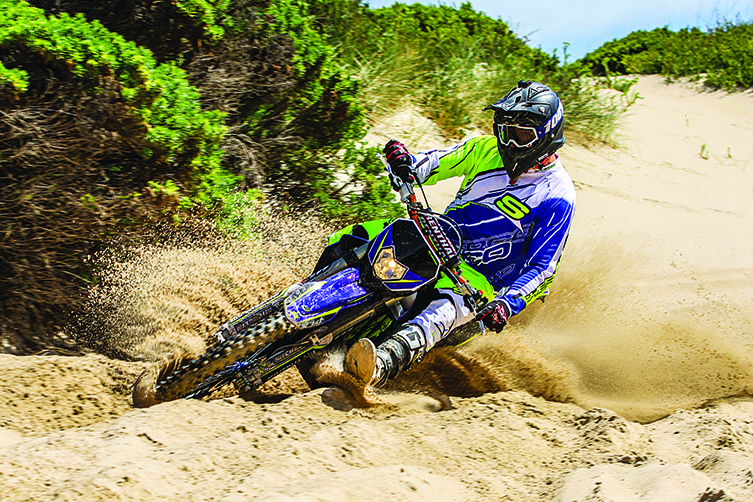
Line Selection
Unlike motocross, where riders will often look to protect the inside line to defend against being passed, trail and enduro is all about finding the best and fastest overall flow and momentum. If there are big bumps on the exit that you think will upset the bike’s drive, you can take a slightly narrower line in the mid-turn and then exit a little diagonally to effectively elongate the bumps. But in a majority of instances, the fastest way around a sandy corner is by keeping your arc as wide as possible, which means following the berm all the way around the outside at maximum speed. Even though there may be a much shorter inside line, bear in mind that it’s likely to form a deep rut in sandy conditions, which can make it awkward, and slow, to get into
and out of efficiently.
In any case, you can’t change direction mid-turn in sand without washing off speed. And that’s why it’s critical to choose your line early. If in doubt, go with the line that gives you a smooth arc all the way to the exit, which means looking further ahead than you would on hardpack. Looking ahead also stops you from getting transfixed on the wheel tracks that tend to crisscross most sandy corners. If you keep your eyes up and use the throttle properly, you’ll make your own tracks.
Controls
You’ve heard the adage that the throttle is your friend in the sand. But it’s a misconception that you need to pin the thing all the time. So long as the power is being delivered to the rear wheel, the bike will maintain momentum and a good front-to-rear chassis balance in sand. Because the rear wheel will get up on top of the sand and drive better when the engine’s in the meaty part of the rev range, I use the tallest gear possible without having to resort to excessive clutch (though you’ll see in all the shots here that I’ve got a finger constantly poised on the clutch lever in case the engine starts to bog). If you shift down an extra gear and then rev the bike too hard in the soft stuff, it tends to dig trenches and go nowhere. Remember also that you want to be accelerating seamlessly the whole way through the corner. And the best way to do that is without gear-shifts. If the engine is already screaming before the corner exit, you’ll lose drive over the big acceleration bumps that tend to form in sand as you drive off the corner.
Flowing vs Squaring
As mentioned above, the fastest way through a sandy corner is usually by flowing around the outside line – which, when you think about it, means you’re placing a lot of faith in that 30cm-high berm holding up. So to minimise the risk of your front wheel blowing through it, you need to focus on placing your wheels at the base of the berm, where it’s firmer, rather than up in the fluffy sand of the berm itself.
Also, because you’re rarely going to get a perfectly formed semi-circle rut or berm through a sandy corner, scan ahead for sections of the berm that have been blown out. Try to get your turning done beforehand so the front-end is nice and light as you pass that section, and then pick up the berm again where it’s a better shape. If you don’t do this, you’ll get sucked into the berm’s ‘hook’ and lose all your speed. Again, it’s all about making the turn one smooth, flowing arc.
In some instances, however, it’s just not possible to find that ideal flowing arc through a sandy corner. Trailriding and enduro always throws unexpected curveballs at you, meaning there can be rocks or roots or square-edged bumps on the ideal line. Even though you know changing lines will rob you of speed, you’ve got no option when confronted by these sorts of obstacles that threaten to eject you off the bike. So how do you square off the corner without losing too much momentum or increasing the risk of a crash? Well, it comes back to technique. You need to ensure your body position is nice and central on the bike and that you’ve got a finger on the clutch to make sure the engine doesn’t bog. In both shots on this spread – one where I’m flowing around the corner and one where I’ve started to push the front wheel to square the turn off – notice how similar my body position is.
To square off a corner, I’ll come in a little hotter than I normally would and brake harder. Then, by getting off the brakes suddenly, it gives me a small window when the bike is settled and the front-end slightly unloaded. And that’s the window in which I’ll get the bike turned quickly – ideally using a small bump or firmer section of the berm to initiate this turn. The coordination between the bike’s lean angle and your throttle and clutch use is critical to getting this technique right and not washing off all your speed by burying the bike in the berm. It also requires you to be 100 percent committed.
Corner Exits
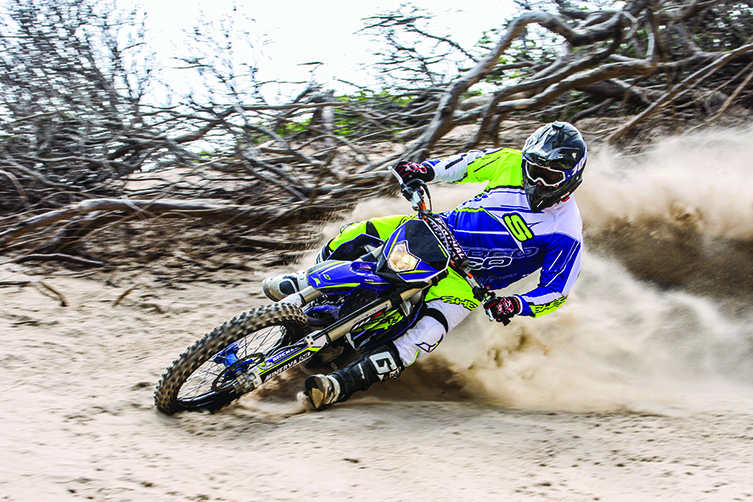
Controls
As you can see from the shot below, I’ve kept my finger poised on the clutch lever for the entire corner, the exit included. And I’ve kept my inside leg well forward and close to the fork leg to make sure I stay forward in the saddle and keep the front-end on the deck as I get heaps of drive off the corner. Because the rear wheel is getting plenty of traction and is unlikely to step out unpredictably at this point, I can afford to keep the bike leant over as I feed on more power. I’ve done this to ensure I stick to a narrower line on the exit and miss the large acceleration bumps further out. There should be no need to give it a handful of throttle at this stage. If you’ve performed the turn properly by getting on the gas early and progressively feeding it on through the corner, you should already be at or near full throttle.
Forward Vision
In sandy conditions, it’s harder to identify where the corner’s ‘exit’ starts because you’ll be on the gas from the second you’ve settled the bike into the turn. In sand, the exit is the part of the track that you’ve lined up much earlier in turn. It’s where you plan to stand the bike up, get the bike pointed where you want it to go and set yourself up for the next section of track and/or the next turn. Because acceleration bumps form faster and are generally bigger in sandy terrain, getting your exit strategy right is more important than ever because all the speed that you’ve maintained around the entire turn could be lost in a second if you slam a series of big holes on the exit at the wrong angle.
That’s why it’s key to get both feet back onto the pegs as early as possible; so you can stand up to absorb the bumps and keep the bike tracking straight and driving, and to shift up a gear when necessary. To save energy, I’ll often use the first bump to help me get to my feet, so I’m ready to drive the rear wheel into the next hit. Standing also forces me to extend my vision from about 10 metres in front of me to 50 metres down the next straight. When you lift your head to look further down the track, you’ll find that the bike follows suit by standing itself up. Your head and bike always follow where your eyes are looking – so if you look at a big hole too long, you’ll end up slamming into it nine out of 10 times. They call it ‘object fixation’, I believe. More than any other type of terrain, you need to remain fluid and use your imagination with line selection in sand.
Common mistakes made in sand
According to Matt Phillips, riders tend to make a few common mistakes in sand. Luckily, if you heed Matt’s advice in this How-to article, they’re easy to eradicate:
- Lack of preparation. Riders don’t prepare because they don’t realise they need to take an entirely different approach to riding sand.
- Not looking far enough ahead. If your vision is just in front of the bike, everything comes at you at a million miles an hour; and your upper body tends to be hunched over, which makes it harder to control the bike. When you look further ahead, things start coming at you really slowly, meaning you’ve got time to set up and prepare for them. Lifting your vision also helps roll your shoulders back, which puts the weight on the rear, where it needs to be in sand.
- Not riding in a tall enough gear. People think they ought to go down an extra gear for a sandy corner to make sure the engine doesn’t bog. But this usually results in the rear wheel digging trenches, or mid-corner gear-shifts that interrupt your flow.
- Erratic movements. Entering corners too quickly, trying to turn too sharply or being too aggressive on the brakes create a greater risk of losing that all-important momentum in sand.
- Changing their bike set-up. For really sandy motocross tracks or desert racing with big whoops, I’ll run more rear-end sag and drop the fork legs through the triple clamps to give me an added safety margin when I’m pushing to the limit all the time. But for sandy trail or enduro, I run my standard set-up. Once you’re riding sand properly – and by that, I mean not rushing into turns and transferring all the weight forward – using the chassis balance you’re used to with your bike is much better.
Related Content
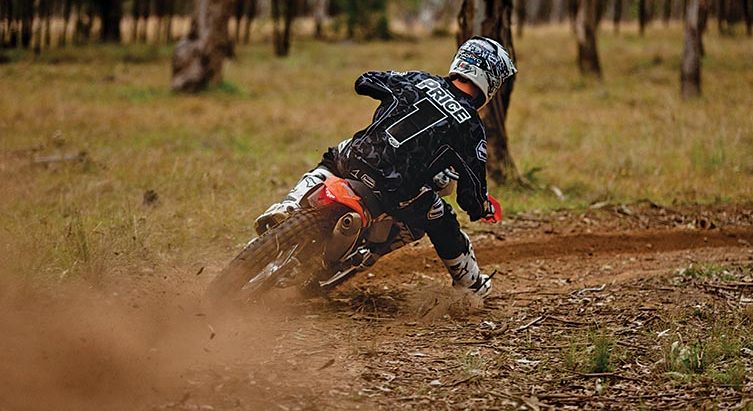
HOW-TO: CORNER SPEED
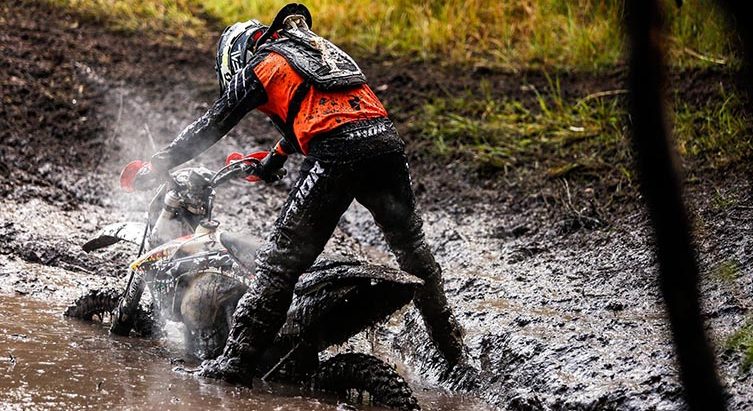
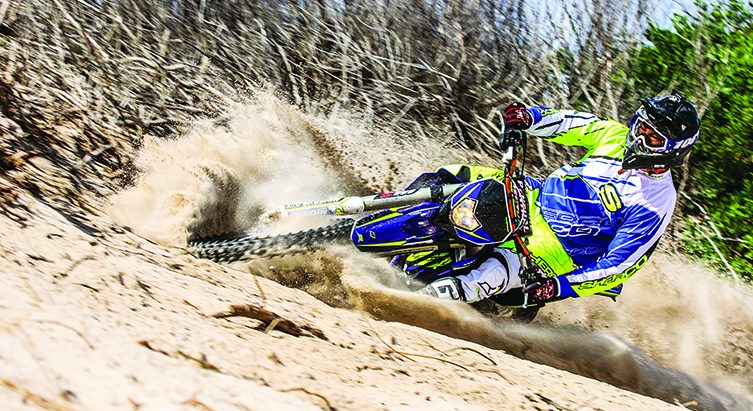
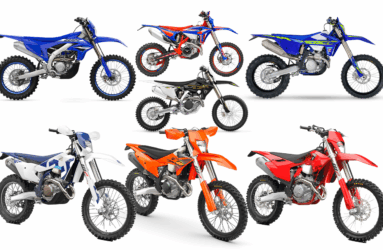

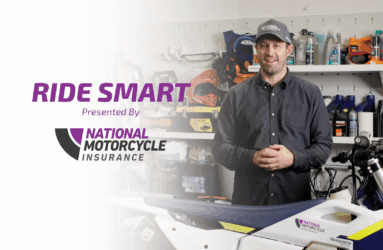
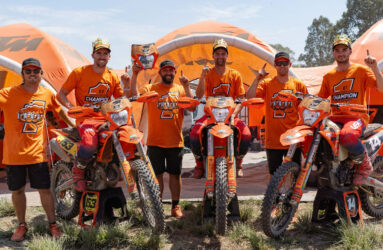

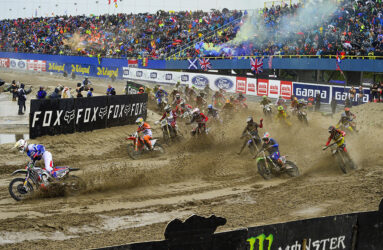


Be the first to comment...